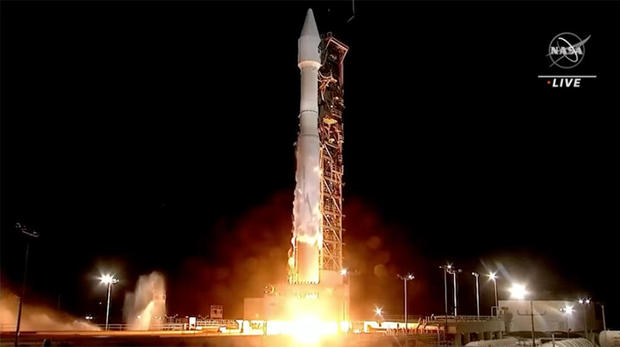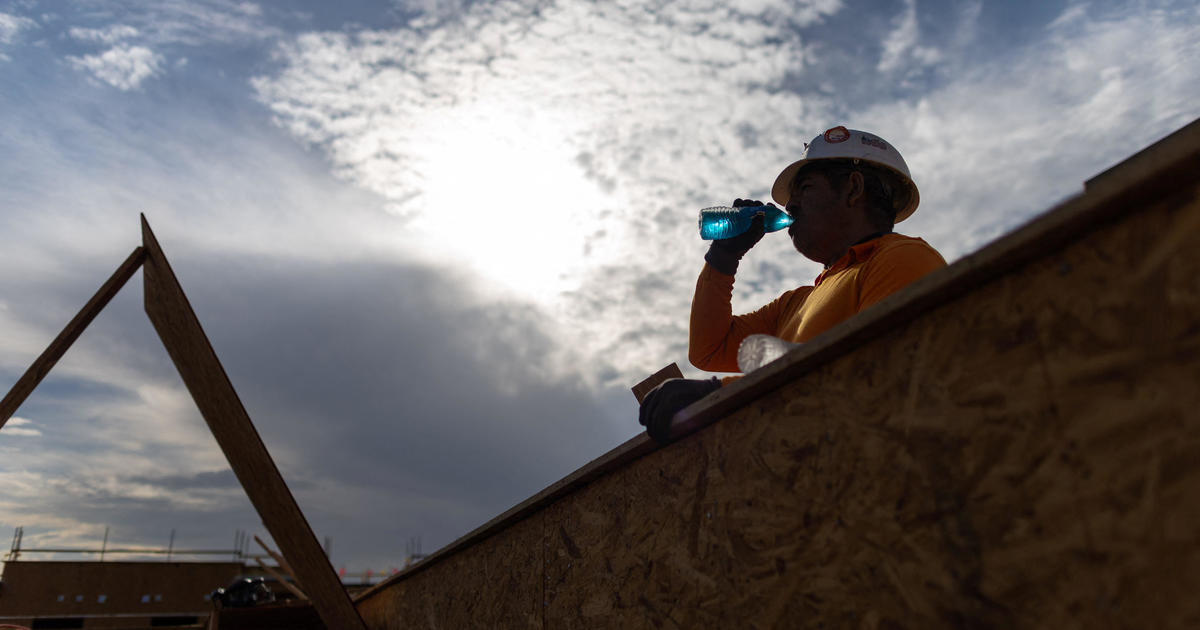Atlas 5 rocket launches NOAA weather satellite, tests inflatable heat shield
A United Launch Alliance Atlas 5 rocket boosted a high-power weather satellite into orbit early Thursday and then fired an inflated "decelerator" back into the atmosphere for a hypersonic re-entry in a dramatic test of heat shield technology that one day could help land astronauts on Mars.
But the Joint Polar Satellite System, or JPSS 2, weather station was the primary payload. Launched by NASA and operated by the National Oceanic and Atmospheric Administration, JPSS 2 was released into a 500-mile-high polar orbit 28 minutes after liftoff from Vandenberg Space Force Base in California at 4:49 a.m. EST.
Equipped with a suite of sophisticated cameras and sensors, the $1.4 billion JPSS 2 "represents an essential step in preserving the continuity of low-Earth orbit observations," said Jordan Gerth, a NOAA meteorologist and satellite scientist.
"JPSS data is a major input into U.S. and international global numerical weather prediction modeling systems," he said. "With JPSS, the quality of local three- to seven-day weather forecasts is outstanding.
"Second, particularly for Alaskans, JPSS provides regular coverage over the poles to detect fires, monitor flood extent and track Arctic weather phenomena. And for all Americans, JPSS provides more than twice daily observations over the Atlantic and Pacific Oceans" where data from weather balloons and buoys are sparse.
JPSS 2 is the second of four satellites in a $12.9 billion program that includes ground station upgrades.
The launch and ascent went smoothly, but data confirming the deployment of its single solar array were not immediately received.
"At this time, the team has not yet received data to confirm solar array deployment,
NASA said in a blog post. "There may not be an issue, but we're monitoring closely as more telemetry data becomes available."
While the JPSS 2 was the primary payload, it provided a "rideshare" launch opportunity for NASA's Low-Earth Orbit Flight Test of an Inflatable Decelerator, or LOFTID, a sort of Frisbee-shaped heat shield that was launched in a compressed, deflated configuration.
After JPSS 2 was released, the Atlas 5's Centaur upper staged aimed LOFTID back at Earth and sent signals to power up its systems. The torus-like structure then inflated, expanding to a diameter of about 20 feet, before it was released to fly on its own.
Slamming into the discernible atmosphere near Hawaii at some 22,000 miles per hour, the spacecraft rapidly decelerated to subsonic velocities, protected by a heat-resistant coating. The re-entry vehicle was expected to experience a maximum deceleration of 9 times the normal force of gravity.
Throughout the hellish plunge back to Earth, multiple cameras, temperature sensors, strain gauges and other sensors collected a steady stream of data, storing it on an on-board recorder and a backup that was ejected on the way down to preserve the readings even if LOFTID could not be recovered.
As it turned out, both the recorder and the heat shield made safe descents to splashdown, sending out GPS coordinates to help the crew on a nearby recovery ship track them down.
It will take researchers time to fully analyze the stored data, but the benefits of hypersonic inflatable aerodynamic decelerators, or HIADs, like LOFTID are potentially game changing.
A LOFTID-like heat shield "can be packed and stowed into small volumes for launch and for the cruise phase of a mission," said project manager Joe Del Corso. "We can then deploy it in orbit in order to decelerate heavy payloads and put them onto the surface of any destination with an atmosphere."
Mars is the most likely target, but the technology also could be used to land payloads on Saturn's moon Titan and possibly even Venus. Closer to home, United Launch Alliance plans to use a variant to recover the first stage engines of its new Vulcan rocket.
Using current "rigid" structures that can fit in a rocket's nose cone, like those used for NASA's current Mars rovers, "we are limited to about four-and-a-half, five-meter aeroshell sizes," he said. "That limits you to about one, one-and-a-half metric tons" of landing mass.
Using scaled-up LOFTID technology, "we are looking to expand that to 20 to 40 metric tons. One, one-and-a-half metric tons is about the equivalent of a very well instrumented golf cart. Twenty to 40 metric tons is what you need to put humans on Mars. It is the equivalent of a small, fully furnished ranch house with a car in the carport."
Another advantage of rapid, high-altitude deceleration is enabling landings at higher altitude sites, places where there is less atmosphere above to slow down an incoming spacecraft.
"By decelerating high in the atmosphere, we're able to pick and choose where we want to land," Del Corso said. "Using classic technology, we can only land on about 50 percent of the martian surface. By decelerating high in the atmosphere, we can put 20 metric tons to about 85 percent of the total surface."







